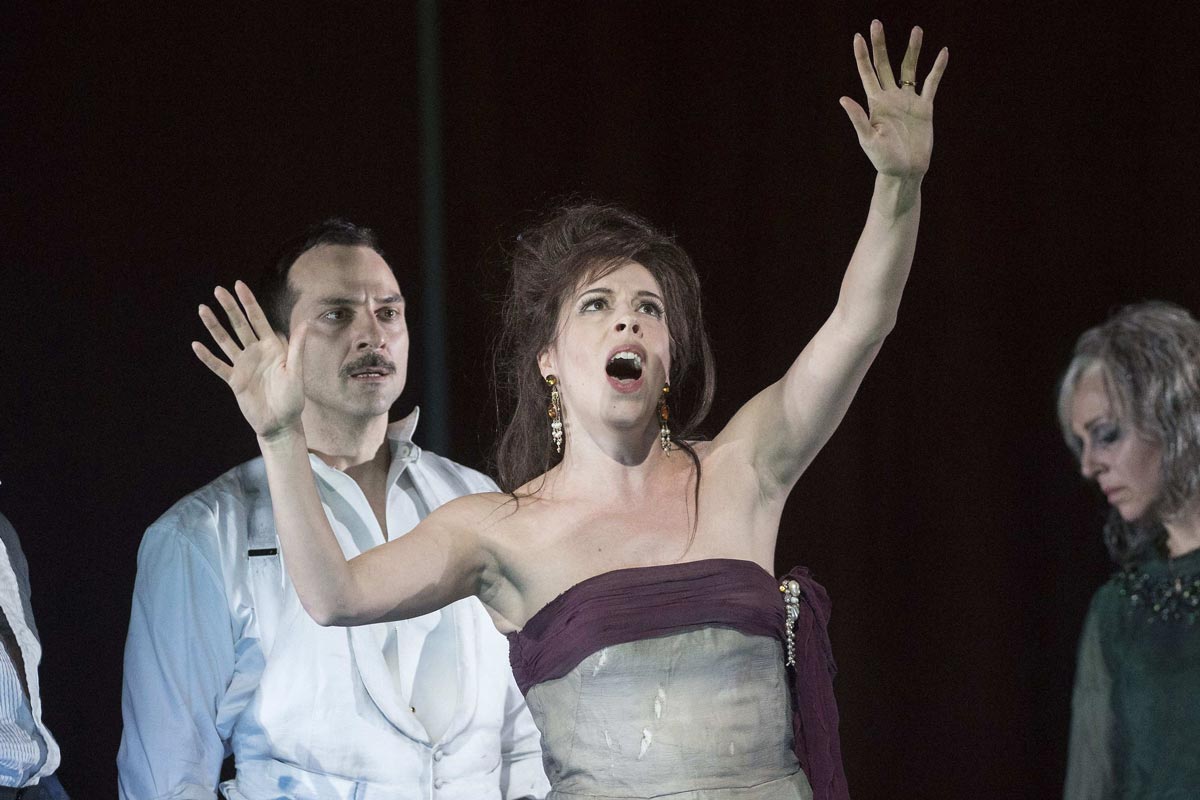How Did an Opera Singer Hit the Highest Note Ever Sung at the Met?

It's a note so high it may register as more of a squeak to some: a high A above high C. And it's being sung for the first time ever at the Metropolitan Opera in New York City by soprano Audrey Luna, The New York Times reported Nov 7.
Luna sings the note — which has never been sung in the 100-year-plus history of the Metropolitan Opera — in the opera "The Exterminating Angel," according to the Times.
But what makes this soaring note so difficult for vocal cords to reach? [7 Amazing Superhuman Feats]
To produce any note, or any vocal sound for that matter, you need three things: an energy source, a sound source and a resonance chamber, said Aaron Johnson, a speech-language pathologist at the Voice Center at Langone Health at New York University.
These are the same components needed for any acoustic musical instrument. "Think of the voice as an instrument," Johnson said.
The energy source in a vocal sound is a person's breath, Johnson said. That breath makes the vocal cords vibrate and produce sound waves — that's the second component, the sound source. Those sound waves bounce around in the mouth and throat — that's the third component, the resonance chamber.
When a person speaks, the vocal cords vibrate. The frequency of these vibrations determines the pitch of the person's voice. During normal speech, the vocal cords vibrate, on average, at a frequency of 100 to 110 cycles per seconds, or hertz, Johnson said. [Why Do Some People's Voices Carry?]
Get the world’s most fascinating discoveries delivered straight to your inbox.
The A note that orchestras use to tune their instruments has a frequency of 440 hertz, Johnson said. Jump up an octave, and the frequency doubles to 880 Hz. Then, jump up one more octave, to 1,760 Hz — that's the high A note — also called high A above high C — that Luna sings in the opera. In other words, if she held that note for 1 second, her vocal cords would've vibrated 1,760 times, Johnson said.
For those vocal cords to vibrate at such a high frequency, they need to be stretched out — think about stretching a rubber band or tightening a guitar string to get a higher note, Johnson said. Finally, the resonance chamber of the throat and mouth needs to be made smaller — through movements of the mouth and throat — to reach a higher note. A smaller chamber can produce a higher pitch, Johnson said. This is why a piccolo plays higher notes than its larger counterpart, the flute, he added.
Technical difficulties
This all seems logical, but reaching these notes is much easier said than done.
"People trying to sing in extended ranges need talent, natural gifts and good training," said Dr. Robert Sataloff, the chairman of the otolaryngology department at Drexel University College of Medicine in Philadelphia.
"The ability to produce extremely high notes such as the [high] A … depends on a variety of factors," Sataloff told Live Science. These include factors that a singer is born with — such as the anatomy of the vocal cords — as well as the singer's technique, he said. [10 Tips for a Healthy Voice]
"These notes are almost impossible with poor technique," Sataloff added. Briefly, proper training involves learning to effectively use the muscles needed to produce the sound. These include the large muscles of the chest, abdomen and back for power; the spaces above the vocal cords for the proper resonance; and the delicate muscles of the larynx to generate the sound, Sataloff said.
But it's important to "use each part of the system optimally," Sataloff said. "If you want to reduce the principles of voice training to two words, they would be 'artistic economy,'" he said. "When singing at extremes of range or volume, there is a common tendency to[ward] extra effort," which could involve recruiting other muscles or using too much force.
"If people try to sing out of their 'natural ranges' with their standard operatic sound and brute force, there is a good chance that they will end up being patients of laryngologists. … I would much rather hear them on the stage than meet them in my office," Sataloff said.
Injuries to the vocal cords can include bleeding; tears in the mucosa, or lining, of the vocal cords; and inflammation, Sataloff said. These "injuries are easier to avoid through good training and appropriate repertoire than they are to cure after they occur."
The high A note sung at the Met, though the highest note sung at that stage, is not the highest note anyone has ever sung, Sataloff added.
"Currently, it is possible to sing a high A and even higher notes for some people, but only for a very few," he said.
But the limitations of the human vocal range are not as narrow as most people think: "Extended-range singers often can cover five octaves, and to some extent, singers can be trained to sing beyond those notes commonly thought of as [the] highest and lowest limits," Sataloff said.
Originally published on Live Science.




